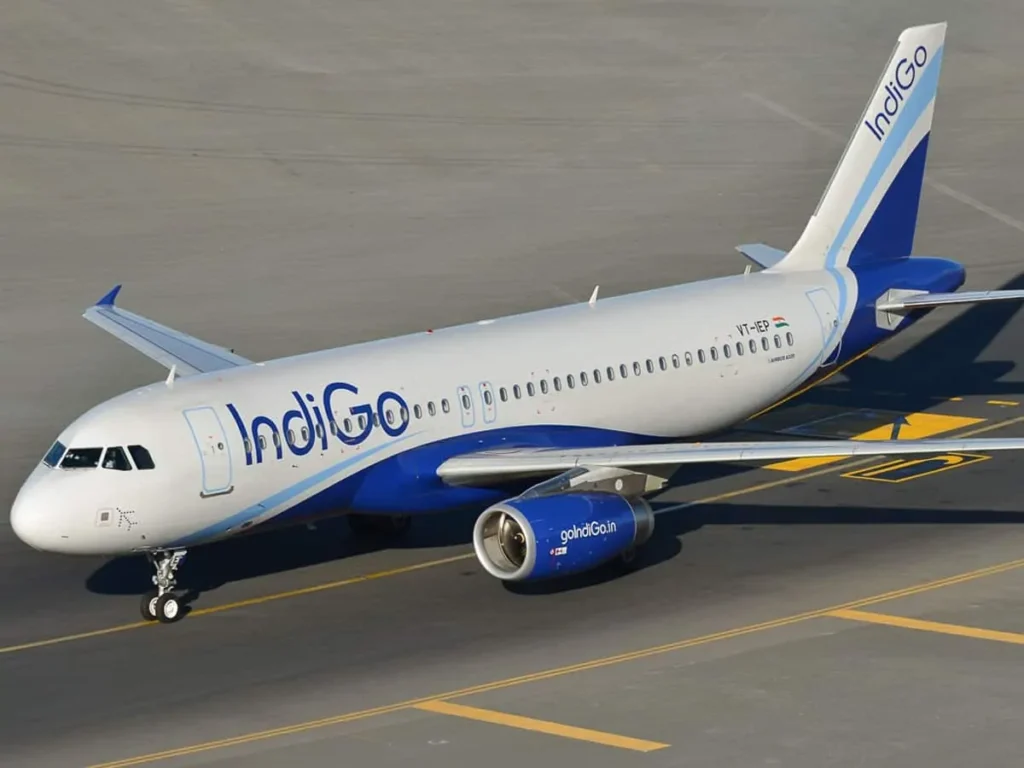Mumbai-bound flight bomb threats – A series of recent events that raise questions over the safety of the sector. It is a matter of contention that IndiGo and Air India flights had to take prompt emergency measures within a short span of time, though efficiently managed by the authorities concerned, but becoming a trend of hoax bomb threats places immense pressure on passengers and security protocols.
Indigo Flight to Muscat: Swift Action After the Threat
Case History: On October 14, Indigo flight 6E 1275 received a bomb threat on its flight from Mumbai to Muscat just before taking off.
Safety Procedures Set in Motion:
Within the minimum possible time as provided in the SOP of the airline, the aircraft was diverted to the bay for isolation.
Security checks were undertaken in the process for the safety of the passengers and crew.
IndiGo issued a statement stating that the aircraft was headed for scheduled checks and also apologized to all the passengers involved for the inconvenience by assuring that all measures were being taken.
Passengers were offered refreshments and aid during this time, which was a proof that the airline did show concern for passenger comfort, especially during emergencies.
Official Statement: IndiGo claimed it had followed severe security procedures, despite the incident, to protect the passengers .
2. Air India Flight to New York: Diverted to Delhi
Incident Information: Hours before the bomb threat on an IndiGo flight, there was another incident that occurred on an Air India flight, flying from Mumbai to New York, that had 239 passengers onboard. They received the threatening message. The flight was diverted to Delhi’s Indira Gandhi International (IGI) airport for further security screening.
Bomb Threat through Social Media:
The threatening message appeared on X, (formerly known as Twitter). This led to alerting the process to be followed at the airports.
Mumbai airport authorities immediately informed the security agencies in Delhi who were on their way to the concerned destination.
Forced Landing at Delhi:
The aircraft, based on its safety precautionary re-routing changed course and consequently was intercepted by IGI Airport security agencies.
Aircraft was grounded at airport; safety measures were strictly implemented and monitored and there was no one who saw any of the passenger or crew persons get hurt.
Safety of Passengers: Just as is the scenario in case of IndiGo, passengers were informed at regular intervals, and every possible effort was made to minimize the impact on their journey.
Bomb Threats: The Increasing Concern
Increasing Bomb Threats: The IndiGo and Air India incidents come in the wake of what appears to be an alarming spate of bomb threats on Indian airports and flights. Many of these are hoaxes, but each incident warrants immediate and stringent action.
Impact on the Operations: Such threats, confirmed or unfounded, cause a complete standstill at the airport. The exercise involves delaying, diverting, or cancelling flights, leading to major inconveniences to thousands of passengers.
Security Procedures: Whether each bomb threat is real or fake, all will be taken seriously enough for full investigation. When an SOP involves handling bomb threats, the aircraft is isolated, and maximum security checks are conducted with all available agencies so that every threat is nullified as much as possible.
Response of Security Agencies
Interagency collaboration: In both cases – one of IndiGo and the other of Air India-the security agencies responded promptly in coordination with the authorities at the airports to effectively carry out the safety process. Coordination with airport security, local police, and the intelligence agencies is of utmost importance while dealing with a bomb threat and related crises.
Passenger Handling and Communication: Something worth mentioning here is that clear communication with a passenger at such an instance is of prime importance. IndiGo as well as Air India emphasized the aspect of clear communication during the occurrence of an incident. The airlines offer real-time updates, refreshment to passengers, and take proper care of passengers, ensuring that they try to reduce their anxiety and fear associated with such security scares.
Global Best Practices: Handling bomb threats in India is done just like in most of the world by global best practices. Flights are grounded, diverted to safer locations, and bomb disposal squads are rushed there as soon as feasible.
Public Reactions and Concerns
Passenger Fear: The threats no doubt raise the alarm for the passengers, who are mostly already afraid of air travel. Bomb threats compound their fear, and most will think twice before boarding the plane.
The airline reputation: Even the threats of frequent ones would strike on airlines and airports’ reputation. Though handling has been very professional from both ends of IndiGo and Air India, such threats hover over the backdrop of the overall flying experience.
Social Media as a Vector for Threats: The bomb threat received over the social media platform is a disturbing trend with online channels increasingly used to disseminate threats. It calls into question how the various social media monitor and address potential security concerns.
Conclusion
Bomb threats, whether real or hoaxes, are a grim reality of this modern world, especially the aviation sector. Although the swift and timely response by airlines such as IndiGo and Air India guarantees the safety of air travel to all passengers, such events no doubt inject fear and disrupt passengers’ travel plans. The frequent rise in such threats demands vigilance among security agencies, airlines, and airports. Smooth communication, tight security checks, and public reassurance will be some of the key measures in dealing and mitigating the impact of such incidents in the future.
Those experiences from each incident and fine-tuned procedures can still aid the transport industry in providing secure journeys for passengers as bomb threats rise daily.

